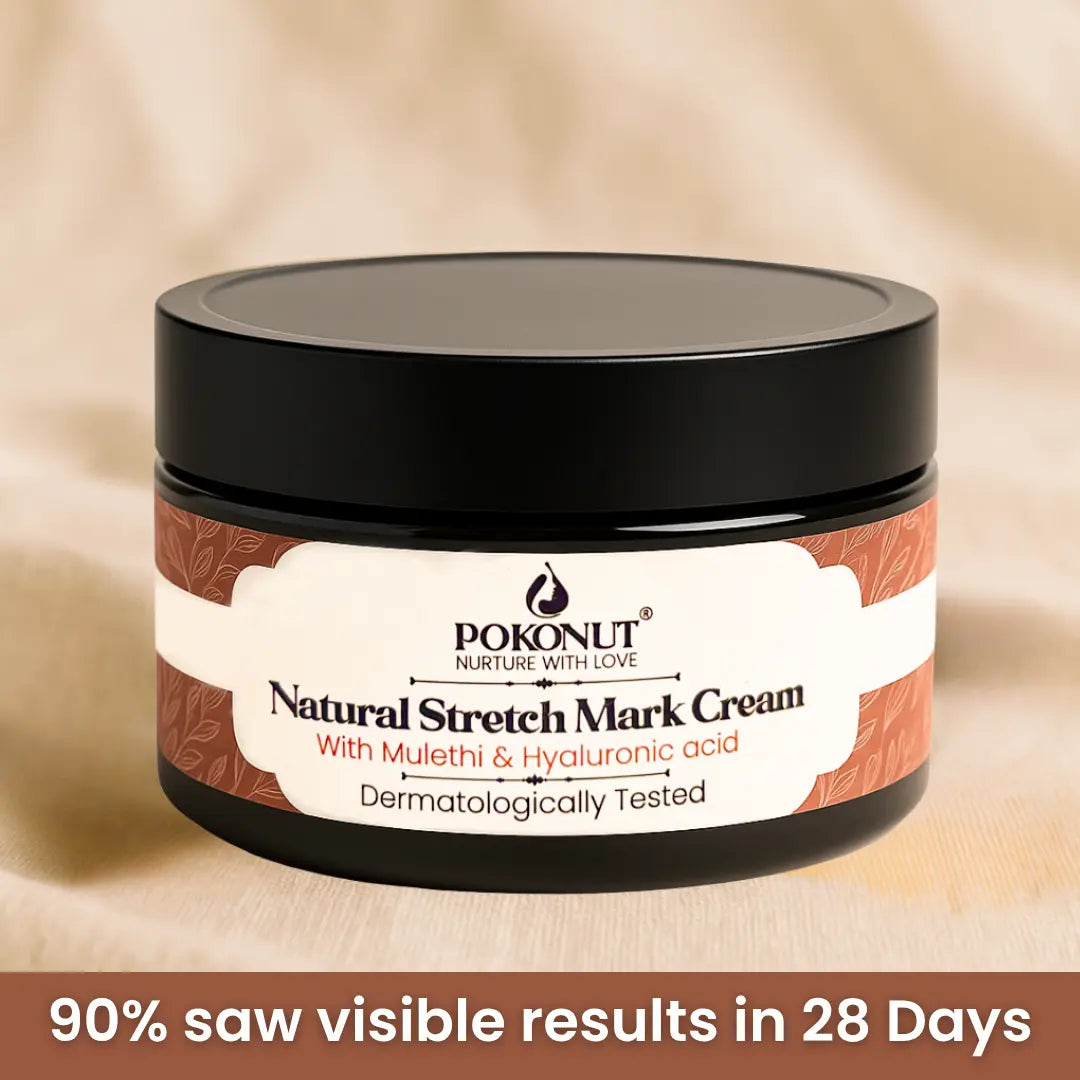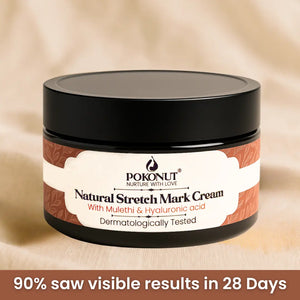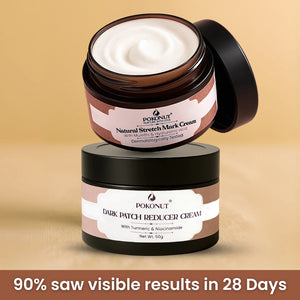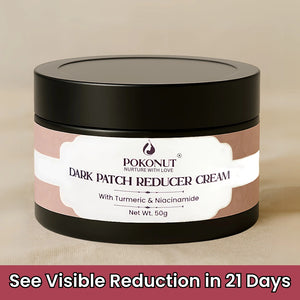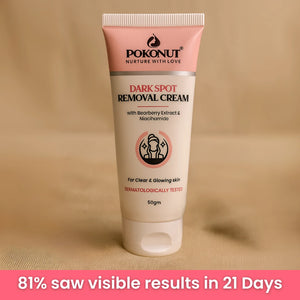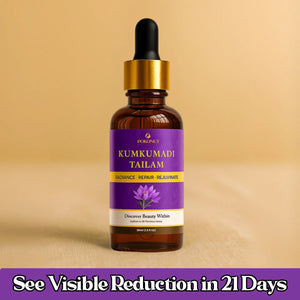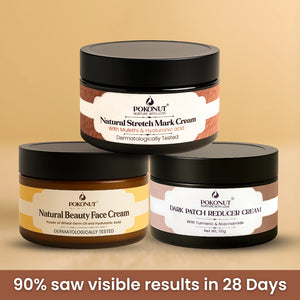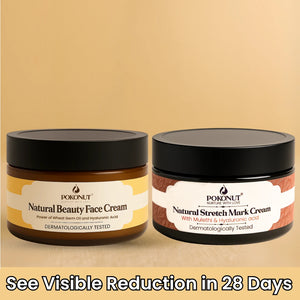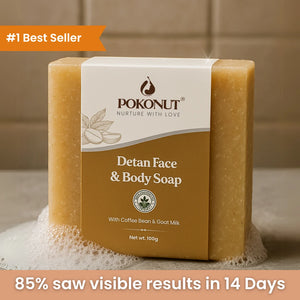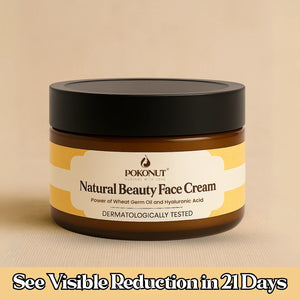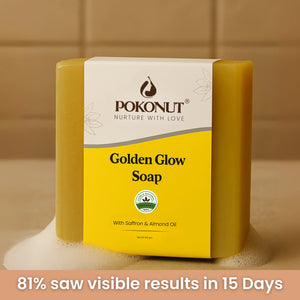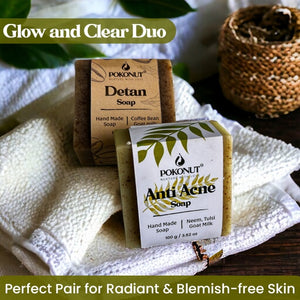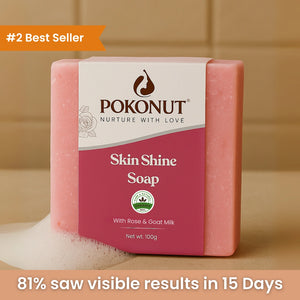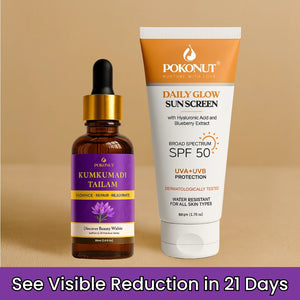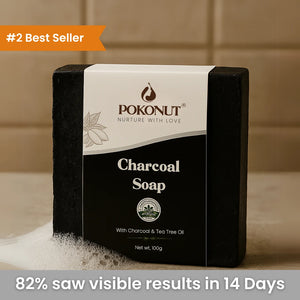Top 7 Benefits of Mulethi for Skin – Backed by Ayurveda and Science

Medically Reviewed By:
Dr. Mousumi Dash, BAMS
Written by Our Editorial Team
Skincare in India is deeply rooted in nature. Among the many herbs used for healthy, glowing skin, Mulethi—also known as licorice root or Yashtimadhu—stands out for its multiple skin-healing properties. From grandma’s nuskhas to modern skincare formulas, mulethi uses for skin have stood the test of time.
In this guide, we’ll uncover the top 7 mulethi benefits for skin, backed both by Ayurvedic wisdom and modern science. If you’ve been wondering about the value of mulethi for face, hyperpigmentation, acne, or even stretch marks—this article is for you.
What is Mulethi?
Mulethi, also known as licorice root, is a popular herb in Ayurveda. It’s often used for coughs and digestion, but it also offers amazing benefits for women’s health and skincare.
In Ayurveda, it is considered a ‘Rasayana’ herb—meaning it rejuvenates the body and promotes long-term vitality. For skin, it helps with:
-
Reducing pigmentation
-
Soothing inflammation
-
Lightening scars
-
Brightening complexion
So if you’re exploring safe and natural skincare remedies, learning about mulethi uses for skin can help you build a routine that works for Indian skin and weather.
1. Skin Brightening and Complexion Enhancement
The most popular of all mulethi benefits for skin is its natural skin-lightening effect. This comes from a compound called glabridin, which helps reduce melanin production—the pigment that darkens skin.
How it helps:
-
Lightens sun tan and pigmentation
-
Fades dull patches and uneven tone
-
Brightens skin naturally over time
For those looking to avoid harsh bleaching creams, mulethi for face is a gentle and effective alternative.
2. Fades Dark Spots and Hyperpigmentation
If you’re dealing with acne marks, melasma, or post-inflammatory pigmentation, mulethi is your friend. Its compound liquiritin helps disperse existing melanin, fading dark patches without irritating the skin.
How to use:
-
Mix mulethi powder with rose water and apply as a spot mask
-
Use 2–3 times a week for visible results
Many skin experts today support mulethi uses for skin when dealing with pigmentation, especially for people with sensitive skin or darker skin tones.
3. Reduces Fine Lines and Premature Ageing
Wondering if mulethi benefits for female skin go beyond just fairness? Definitely. Thanks to its antioxidant properties, mulethi helps fight oxidative stress, which is one of the biggest causes of premature ageing.
What it does:
-
Prevents breakdown of collagen
-
Smoothens fine lines and wrinkles
-
Keeps skin youthful and plump
Using mulethi for face in oil infusions or face masks can maintain a healthy glow as you age.
4. Soothes Skin Conditions like Eczema and Psoriasis
Ayurveda has used mulethi for centuries to calm inflammatory skin conditions. It has anti-inflammatory, antimicrobial, and hydrating properties, making it ideal for eczema, rashes, and even itchy or peeling skin.
How to apply:
-
Mix mulethi powder with aloe vera gel or honey
-
Apply on affected areas for 15 minutes
-
Use regularly for relief from inflammation
One of the often overlooked mulethi benefits for skin is this soothing effect—especially helpful during seasonal flare-ups in Indian weather.
5. Helps in Treating Acne and Blemishes
Acne isn't just a teenage problem. Adult women across India face hormonal breakouts, especially during periods, PCOS, or stress. Mulethi acts as a natural antibacterial agent that clears pores and prevents new breakouts.
Benefits:
-
Fights acne-causing bacteria
-
Reduces redness and swelling
-
Prevents pimple scars
This makes mulethi for face a perfect add-on to your acne care routine—gentle, non-drying, and herbal.
6. Natural UV Protection and Damage Repair
Did you know that mulethi benefits for skin also include mild sun protection? Mulethi offers protection from harmful UVB rays and helps repair sun damage like tanning, dryness, or early pigmentation.
How to use:
-
Mix mulethi with curd or aloe vera as a post-sun mask
-
It cools, hydrates, and revives sun-exposed skin
While it won’t replace sunscreen, it’s a great after-sun repair remedy, especially in summer.
7. Heals Scars, Wounds, and Stretch Marks
One of the lesser-known but highly effective mulethi uses for skin is in improving skin texture after injuries, cuts, or scarring. It promotes tissue regeneration and helps lighten darkened areas over time.
Pokonut Stretch Mark Cream – Enriched with Mulethi for Skin Healing
If you’ve been looking for a natural way to treat stretch marks, we’ve got something special for you. Pokonut’s Stretch Mark Cream contains mulethi, aloe vera, shea butter, and vitamin E—everything your skin needs to heal and bounce back.
Benefits of Mulethi in this cream:
-
Fades new and old stretch marks gently
-
Calms irritated or itchy skin (common in pregnancy)
-
Supports skin’s elasticity and smoothness
This cream reflects the best of both worlds: age-old mulethi benefits for skin, and clean, effective formulations for modern skincare needs.
Explore Pokonut Stretch Mark Cream →
How to Use Mulethi in Your Skincare Routine
Want to get started today? Here’s how you can use mulethi for face at home:
DIY Face Pack
-
Mix 1 tsp mulethi powder with rose water or raw milk
-
Apply on clean face
-
Leave for 15 mins and rinse with cool water
Spot Treatment
-
Make a paste with mulethi and honey
-
Apply only on dark spots or blemishes
- Wash off after 20 minutes
You can also look for ready-made Ayurvedic creams that mention mulethi uses for skin in their ingredient list.
Precautions Before Using Mulethi
-
Do a patch test before applying to full face
-
Avoid combining it with acidic products like vitamin C or AHAs
-
Use 2–3 times a week, not daily
Even though mulethi benefits for female skincare are many, it’s important to observe how your skin reacts to any new ingredient.
Final Thoughts
So, is mulethi good for skin? Absolutely—and now you know why.
From clearing blemishes and fading marks to improving texture and brightening your glow, mulethi is a must-have in every natural skincare routine. Whether you make your own packs or choose creams like Pokonut’s, the benefits are real—and rooted in both science and tradition.
Start simple, stay consistent, and let nature do the rest.
FAQ’s
1. Is mulethi good for skin every day?
Yes, but it’s best used 2–3 times a week to avoid over-exfoliation. For daily use, opt for mulethi-infused creams.
2. Can mulethi be used on oily skin?
Absolutely. It balances oil production and fights acne, making it suitable for oily and combination skin.
3. What are the top mulethi benefits for female skin?
From fading pigmentation to healing stretch marks, mulethi supports hormonal skin issues and ageing concerns—common in Indian women.
4. How long does it take for mulethi to show results?
With consistent use (2–3 times a week), you may start seeing results in 3–4 weeks for pigmentation or dullness.
5. Can I mix mulethi with multani mitti?
Yes, this combination is great for oily, acne-prone skin.
6. Does Pokonut’s Stretch Mark Cream really work?
Yes, it combines mulethi with shea butter and aloe vera for gentle skin healing. Suitable for pregnant and non-pregnant women.
7. Is mulethi for face suitable for men too?
Yes! Skin doesn’t care about gender—mulethi is effective for everyone.
8. Can mulethi be used during pregnancy?
Topically, yes—especially when used in creams like Pokonut’s stretch mark formula. But always consult a doctor for internal use.
9. Will mulethi bleach my skin?
No, it doesn’t bleach. It lightens skin tone by reducing melanin and soothing irritation.
10. Is mulethi better than sandalwood or turmeric?
Each has its own benefits. But when it comes to pigmentation and scars, mulethi benefits for skin are unmatched in gentle lightening.
About Doctor :

